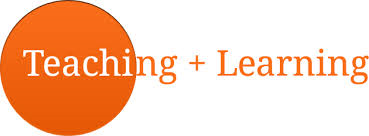
Hi Everyone,
I just wanted to update you on some changes you will see in your child's classroom. As part of our focus on developing and improving our teaching and learning practices we have been investigating how to better target our teaching.
One of the key strategies in implementing this change is through having clear learning intentions and success criteria. Learning intentions describe what the teacher wants the student to learn. This makes it very clear to the students what they need to attain (in terms of skill/knowledge acquisition) in a lesson. The success criteria clearly show our students how to successfully demonstrate their learning at the end of the lesson.
At the beginning of each lesson the classroom teacher will clearly outline the learning intention so every student understands what the aim of the lesson is. The teacher will then explain the success criteria and what every student needs to achieve to have a successful learning session. Throughout the lesson the teacher questions and feedback to the students is based upon the learning intention and success criteria.
Within your child’s classroom and on classroom displays you will see learning intentions and success criteria presented in the following ways:
Learning Intention = We Are Learning To (WALT)
Success Criteria: Signs of Success (SOS)
The impact that clear learning intentions and success criteria can have was made evident in the extensive research by internationally acclaimed Melbourne University Professor, John Hattie. In his best-selling book ‘Visible Learning for Teachers’, learning intentions and success criteria appeared in the Top 10 influences on student learning.
As a school and staff we are working tirelessly to improve the teaching and learning programs at Templestowe Park. I hope that this has given you a bit of insight into one of the strategies you will see in your child’s classroom.
Sincerely
Mark
I just wanted to update you on some changes you will see in your child's classroom. As part of our focus on developing and improving our teaching and learning practices we have been investigating how to better target our teaching.
One of the key strategies in implementing this change is through having clear learning intentions and success criteria. Learning intentions describe what the teacher wants the student to learn. This makes it very clear to the students what they need to attain (in terms of skill/knowledge acquisition) in a lesson. The success criteria clearly show our students how to successfully demonstrate their learning at the end of the lesson.
At the beginning of each lesson the classroom teacher will clearly outline the learning intention so every student understands what the aim of the lesson is. The teacher will then explain the success criteria and what every student needs to achieve to have a successful learning session. Throughout the lesson the teacher questions and feedback to the students is based upon the learning intention and success criteria.
Within your child’s classroom and on classroom displays you will see learning intentions and success criteria presented in the following ways:
Learning Intention = We Are Learning To (WALT)
Success Criteria: Signs of Success (SOS)
The impact that clear learning intentions and success criteria can have was made evident in the extensive research by internationally acclaimed Melbourne University Professor, John Hattie. In his best-selling book ‘Visible Learning for Teachers’, learning intentions and success criteria appeared in the Top 10 influences on student learning.
As a school and staff we are working tirelessly to improve the teaching and learning programs at Templestowe Park. I hope that this has given you a bit of insight into one of the strategies you will see in your child’s classroom.
Sincerely
Mark
 RSS Feed
RSS Feed
